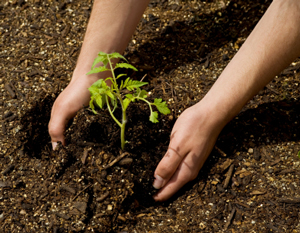Written by Jackie Carroll and published on https://www.gardeningknowhow.com/
Landscaping adds value to your home. The more attractive your home is, the greater its resale value. The right landscaping also helps you build a sense of pride. There are instances, however, when the landscape you begin your home with has to change. Transplanting trees, shrubs, and flowers, therefore, become an important consideration.
Table of Contents
Transplanting Trees And Shrubs: How And When To Move Trees In Landscape

Moving an established tree can be an intimidating project, but if it can transform your landscape or fix fundamental design problems, it’s worth the trouble. How exactly does one go about moving trees though? This article explains when and how to transplant a tree, so keep reading for some tree moving tips.
When to Move Trees
Move a deciduous tree in early spring before it begins to leaf out or early fall after the leaves begin to turn color. Don’t move evergreens during a growth flush or in the fall when it’s too late for them to become established before winter weather arrives. Late summer is usually a good time to move evergreens.
Tree and shrub roots extend well beyond the volume of soil that you will be able to move. Prune the roots to a manageable size well in advance so the cuts will have time to heal before transplanting trees and shrubs. If you plan to transplant in the spring, prune the roots in the fall, after the leaves drop. If you want to transplant in the fall, prune the roots in the spring before the leaf and flower buds begin to swell.
How to Transplant a Tree or Shrub
The volume of the root ball you’ll need to successfully transplant a tree or shrub depends on the diameter of the trunk for deciduous trees, the height of the shrub for deciduous shrubs, and the spread of the branches for evergreens. Here are the guidelines:
- Give deciduous trees with a 1 inch (2.5 cm.) trunk diameter a minimum root ball size of 18 inches (46 cm.) wide and 14 inches (36 cm.) deep. For a 2 inch (5 cm.) diameter trunk, the root ball should be at least 28 inches (71 cm.) wide and 19 inches (48 cm.) deep.
- Deciduous shrubs that are 18 inches (46 cm.) tall need a root ball 10 inches (25 cm.) wide and 8 inches (20 cm.) deep. At 3 feet (91 cm.), allow a root ball of 14 inches (36 cm.) wide and 11 inches (28 cm.) deep. A 5 foot (1.5 m.) deciduous shrub needs a root ball 18 inches (46 cm.) wide and 14 inches (36 cm.) deep.
- Evergreens with a branch spread of about a foot (31 cm.) need a root ball 12 inches (31 cm.) wide and 9 inches (23 cm.) deep. Evergreens with a 3 foot (91 cm.) spread need a root mass 16 inches (41 cm.) wide and 12 inches (31 cm.) deep. A 5 foot (1.5 m.) spread means that the plant needs a 22 inch (56 cm.) diameter root ball that is at least 15 inches (38 cm.) deep.
The mass of soil for trees greater than 2 inches (5 cm.) in diameter weighs several hundred pounds. Moving trees this size is best left to professionals.
Prune the roots by digging a trench around the tree or shrub at the proper distance for the size. Cut through the roots as you find them. Refill the trench when you are done, adding water and pressing down firmly a couple of times to remove air pockets.
Here are some tree moving tips to help transplanting go as smoothly as possible:
- Prepare the planting hole before digging up a tree. It should be about three times as wide and the same depth as the root ball. Keep the subsoil and topsoil separate.
- Tie up the branches with twine or strips of burlap to keep them out of the way while moving the tree.
- Mark the north side of the tree to make it easier to orient it in the right direction in the new location.
- Trees are lighter and easier to handle if you rinse off the soil before moving the tree. You should only remove the soil from trees and shrub roots when the trunk diameter is greater than an inch (2.5 cm.), and only when moving dormant trees.
- Set the tree in the hole so that the soil line on the tree is even with the surrounding soil. Planting it too deep leads to rot.
- Fill in the hole, replacing the subsoil to the proper depth and finishing the hole with topsoil. Firm the soil with your foot as you fill, and add water to fill the hole when it is half full of soil to remove air pockets.
- For the first few weeks, water often enough to keep the soil moist but not saturated. 2 to 3 inches (5-8 cm.) of mulch helps the soil retain moisture. Don’t allow the mulch to come in contact with the trunk of the tree.
Original post here https://www.gardeningknowhow.com/ornamental/trees/tgen/transplanting-trees.htm#:~:text=1%20Prepare%20the%20planting%20hole%20before%20digging%20up,of%20mulch%20helps%20the%20soil%20retain%20moisture.%20

